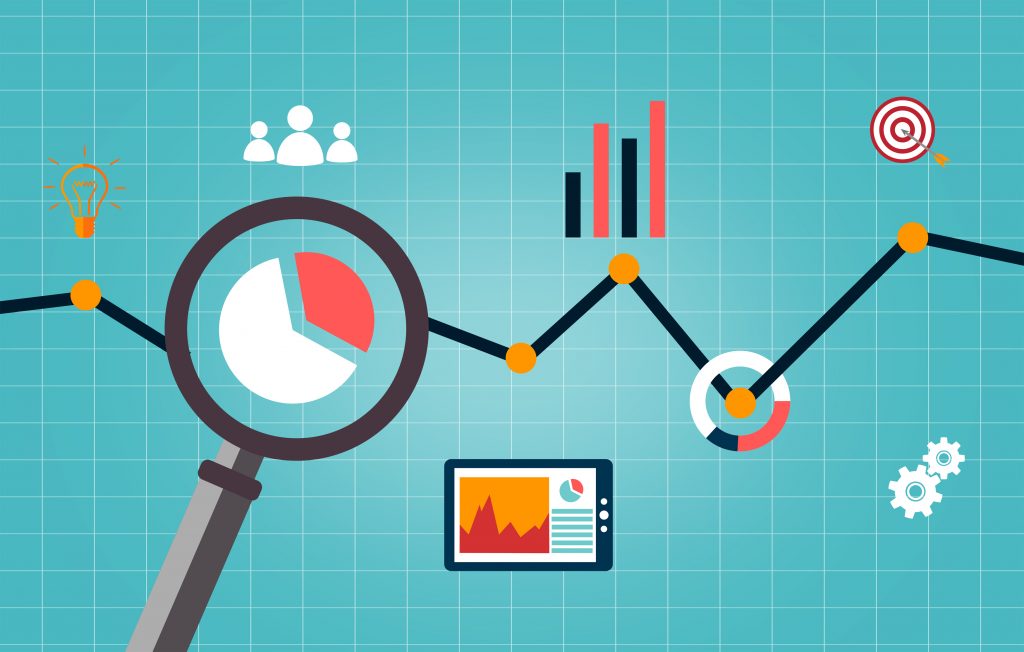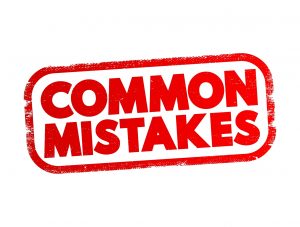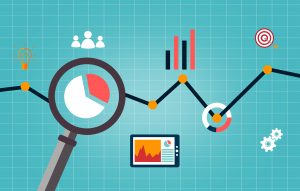
- Logo
- Ticker
- Company Name
- Exchange
- Previous close
Discover Invetso’s 12 Frameworks: A Comprehensive Guide to Qualitative Stock Analysis

Introduction
When analyzing a company, understanding the full picture requires more than just financial data. That’s where frameworks come in—they provide a structured, consistent approach to evaluate a company’s strengths, challenges, and long-term potential. At Invetso, we combine 12 proven frameworks to help you analyze stocks from every angle, simplifying the process and delivering deeper insights.
Explore Invetso’s Frameworks
At Invetso, we simplify the process of analyzing companies by applying 12 structured frameworks that provide a comprehensive view of their strengths, opportunities, and challenges. Here’s a closer look at each framework and how it contributes to qualitative stock analysis:
- SWOT Analysis
SWOT analysis is a framework used to evaluate a company’s strengths, weaknesses, opportunities, and threats.
For example, Apple Inc. demonstrates clear strengths, such as a loyal customer base and an integrated ecosystem of devices and services. However, its dependence on hardware sales is a notable weakness. Opportunities include expanding into emerging markets and new technologies like AR/VR, while threats arise from intense competition and global supply chain vulnerabilities.
- Porter’s 5 Forces
Porter’s 5 Forces analyzes the competitive dynamics of an industry by examining factors like supplier power, buyer power, industry rivalry, potential new entrants, and substitutes.
For instance, Netflix operates in a competitive market, facing rivalry from platforms like Disney+ and Amazon Prime Video. Although barriers to entry are high due to the cost of producing original content, substitutes such as traditional television and gaming platforms pose significant challenges.
- PESTLE Analysis
PESTLE Analysis examines macroeconomic factors influencing a business, including politics, economy, society, technology, legal, and environmental factors.
Tesla, for example, benefits from favorable political support through government incentives for electric vehicles and environmental sustainability. Technological advancements in battery technology further strengthen its position, while legal and regulatory challenges in new markets can pose risks.
- Economic Moat
Economic moats refer to sustainable competitive advantages that protect a company from competitors.
Coca-Cola is a prime example, leveraging its global brand recognition and extensive distribution network to maintain cost advantages. Its brand power ensures high customer loyalty, making it difficult for competitors to encroach on its market share.
- Management Analysis
Management Analysis evaluates the quality of leadership and strategic vision within a company.
Amazon exemplifies this framework through the long-term vision of its founder, Jeff Bezos, who prioritized customer satisfaction and innovation. Strategic investments in logistics and cloud computing (AWS) further demonstrate the strength of its leadership.
- ESG Analysis
ESG (Environmental, Social, Governance) Analysis evaluates a company’s performance in sustainability and ethical practices.
For instance, Unilever has made significant strides in environmental sustainability by reducing plastic waste and carbon emissions. Its fair trade practices and commitment to ethical sourcing reflect its strong social and governance policies.
- Business Model Analysis
Business Model Analysis explores how a company creates, delivers, and captures value.
Uber is a good example, connecting riders and drivers through its platform. Its value lies in the convenience of its app, which delivers seamless ride-hailing services. Uber captures value by taking a percentage of each ride while expanding into adjacent services like food delivery.
- Scenario Analysis
Scenario Analysis evaluates potential future outcomes based on hypothetical changes.
For example, Pfizer might explore scenarios where increased demand for vaccines drives revenue growth. Alternatively, regulatory changes or new competitors in the pharmaceutical market could present challenges, highlighting the importance of strategic adaptability.
- Risks & Opportunities
This framework identifies critical challenges and growth paths for a company.
Meta (formerly Facebook) illustrates this with risks like privacy concerns and regulatory scrutiny, while opportunities lie in expanding the metaverse and virtual reality markets. This dual analysis helps assess the company’s overall positioning.
- 10Y Growth Analysis
10Y Growth Analysis examines long-term growth strategies over 3, 5, and 10 years.
Microsoft, for instance, focuses on short-term growth in cloud computing (Azure) over the next three years, medium-term investments in AI and machine learning over five years, and potential leadership in quantum computing within a decade.
- BCG Matrix
The BCG Matrix categorizes a company’s business units into Stars, Cash Cows, Question Marks, and Dogs.
Procter & Gamble (P&G) exemplifies this with Tide detergent as a Cash Cow generating steady revenue, Oral-B electric toothbrushes as Stars driving growth, and emerging products in developing markets as Question Marks with uncertain potential.
- Company Milestones
Company Milestones highlight significant past achievements and strategic decisions.
Google (now Alphabet) is an example, with its 2004 IPO marking a pivotal moment. In 2015, it restructured into Alphabet to foster innovation, while its recent expansion into AI technologies demonstrates ongoing adaptability and leadership.
By combining these 12 frameworks into one platform, Invetso provides a streamlined way to explore key insights and evaluate companies with clarity. With AI-driven analysis, you can save time and gain a deeper understanding of each company’s unique strengths and challenges.
Overall Score
Each of these frameworks is scored to provide a quick snapshot of how the company performs in specific areas, such as sustainability, competitive strength, and growth potential. These individual framework scores are then combined into an overall company score, offering a streamlined way to compare companies across industries and evaluate their strengths at a glance.
You can also save your favorite companies to your watchlists and download reports in PDF or Word format for easy review, editing, or sharing whenever needed.
Key Takeaways
- Comprehensive Coverage: Invetso’s 12 frameworks provide a holistic view of a company’s strengths, weaknesses, opportunities, and challenges.
- Real-World Examples: Relatable examples like Apple, Tesla, and Coca-Cola illustrate how each framework applies in practice.
- Simplified Analysis: The structured approach saves time and ensures clarity, making stock analysis accessible to everyone.
- AI-Driven Insights: Invetso combines advanced technology with proven frameworks to deliver deeper insights in a streamlined way.
- Versatility: These frameworks work together to evaluate companies from multiple perspectives, whether you’re assessing leadership, market dynamics, or long-term growth.
- Scoring System: Each framework is individually scored to assess specific areas, and the combined overall score provides a quick and easy way to compare companies across industries.
Ready to Start Exploring Your Companies?
🎯 Sign up for free today today and see how these frameworks can transform the way you analyze companies.
Disclaimer: Invetso is not a financial advisor. All information provided is for educational and informational purposes only. Always conduct your own research before making any decisions.
You can continue reading
Discover Invetso’s 12 Frameworks: A Comprehensive Guide to Qualitative Stock Analysis

Introduction
When analyzing a company, understanding the full picture requires more than just financial data. That’s where frameworks come in—they provide a structured, consistent approach to evaluate a company’s strengths, challenges, and long-term potential. At Invetso, we combine 12 proven frameworks to help you analyze stocks from every angle, simplifying the process and delivering deeper insights.
Explore Invetso’s Frameworks
At Invetso, we simplify the process of analyzing companies by applying 12 structured frameworks that provide a comprehensive view of their strengths, opportunities, and challenges. Here’s a closer look at each framework and how it contributes to qualitative stock analysis:
- SWOT Analysis
SWOT analysis is a framework used to evaluate a company’s strengths, weaknesses, opportunities, and threats.
For example, Apple Inc. demonstrates clear strengths, such as a loyal customer base and an integrated ecosystem of devices and services. However, its dependence on hardware sales is a notable weakness. Opportunities include expanding into emerging markets and new technologies like AR/VR, while threats arise from intense competition and global supply chain vulnerabilities.
- Porter’s 5 Forces
Porter’s 5 Forces analyzes the competitive dynamics of an industry by examining factors like supplier power, buyer power, industry rivalry, potential new entrants, and substitutes.
For instance, Netflix operates in a competitive market, facing rivalry from platforms like Disney+ and Amazon Prime Video. Although barriers to entry are high due to the cost of producing original content, substitutes such as traditional television and gaming platforms pose significant challenges.
- PESTLE Analysis
PESTLE Analysis examines macroeconomic factors influencing a business, including politics, economy, society, technology, legal, and environmental factors.
Tesla, for example, benefits from favorable political support through government incentives for electric vehicles and environmental sustainability. Technological advancements in battery technology further strengthen its position, while legal and regulatory challenges in new markets can pose risks.
- Economic Moat
Economic moats refer to sustainable competitive advantages that protect a company from competitors.
Coca-Cola is a prime example, leveraging its global brand recognition and extensive distribution network to maintain cost advantages. Its brand power ensures high customer loyalty, making it difficult for competitors to encroach on its market share.
- Management Analysis
Management Analysis evaluates the quality of leadership and strategic vision within a company.
Amazon exemplifies this framework through the long-term vision of its founder, Jeff Bezos, who prioritized customer satisfaction and innovation. Strategic investments in logistics and cloud computing (AWS) further demonstrate the strength of its leadership.
- ESG Analysis
ESG (Environmental, Social, Governance) Analysis evaluates a company’s performance in sustainability and ethical practices.
For instance, Unilever has made significant strides in environmental sustainability by reducing plastic waste and carbon emissions. Its fair trade practices and commitment to ethical sourcing reflect its strong social and governance policies.
- Business Model Analysis
Business Model Analysis explores how a company creates, delivers, and captures value.
Uber is a good example, connecting riders and drivers through its platform. Its value lies in the convenience of its app, which delivers seamless ride-hailing services. Uber captures value by taking a percentage of each ride while expanding into adjacent services like food delivery.
- Scenario Analysis
Scenario Analysis evaluates potential future outcomes based on hypothetical changes.
For example, Pfizer might explore scenarios where increased demand for vaccines drives revenue growth. Alternatively, regulatory changes or new competitors in the pharmaceutical market could present challenges, highlighting the importance of strategic adaptability.
- Risks & Opportunities
This framework identifies critical challenges and growth paths for a company.
Meta (formerly Facebook) illustrates this with risks like privacy concerns and regulatory scrutiny, while opportunities lie in expanding the metaverse and virtual reality markets. This dual analysis helps assess the company’s overall positioning.
- 10Y Growth Analysis
10Y Growth Analysis examines long-term growth strategies over 3, 5, and 10 years.
Microsoft, for instance, focuses on short-term growth in cloud computing (Azure) over the next three years, medium-term investments in AI and machine learning over five years, and potential leadership in quantum computing within a decade.
- BCG Matrix
The BCG Matrix categorizes a company’s business units into Stars, Cash Cows, Question Marks, and Dogs.
Procter & Gamble (P&G) exemplifies this with Tide detergent as a Cash Cow generating steady revenue, Oral-B electric toothbrushes as Stars driving growth, and emerging products in developing markets as Question Marks with uncertain potential.
- Company Milestones
Company Milestones highlight significant past achievements and strategic decisions.
Google (now Alphabet) is an example, with its 2004 IPO marking a pivotal moment. In 2015, it restructured into Alphabet to foster innovation, while its recent expansion into AI technologies demonstrates ongoing adaptability and leadership.
By combining these 12 frameworks into one platform, Invetso provides a streamlined way to explore key insights and evaluate companies with clarity. With AI-driven analysis, you can save time and gain a deeper understanding of each company’s unique strengths and challenges.
Overall Score
Each of these frameworks is scored to provide a quick snapshot of how the company performs in specific areas, such as sustainability, competitive strength, and growth potential. These individual framework scores are then combined into an overall company score, offering a streamlined way to compare companies across industries and evaluate their strengths at a glance.
You can also save your favorite companies to your watchlists and download reports in PDF or Word format for easy review, editing, or sharing whenever needed.
Key Takeaways
- Comprehensive Coverage: Invetso’s 12 frameworks provide a holistic view of a company’s strengths, weaknesses, opportunities, and challenges.
- Real-World Examples: Relatable examples like Apple, Tesla, and Coca-Cola illustrate how each framework applies in practice.
- Simplified Analysis: The structured approach saves time and ensures clarity, making stock analysis accessible to everyone.
- AI-Driven Insights: Invetso combines advanced technology with proven frameworks to deliver deeper insights in a streamlined way.
- Versatility: These frameworks work together to evaluate companies from multiple perspectives, whether you’re assessing leadership, market dynamics, or long-term growth.
- Scoring System: Each framework is individually scored to assess specific areas, and the combined overall score provides a quick and easy way to compare companies across industries.
Ready to Start Exploring Your Companies?
🎯 Sign up for free today today and see how these frameworks can transform the way you analyze companies.
Disclaimer: Invetso is not a financial advisor. All information provided is for educational and informational purposes only. Always conduct your own research before making any decisions.
You can continue reading
Unlock exclusive Perks
Be part of a select group and enjoy exclusive benefits reserved only for our Premium members.

- Logo
- Ticker
- Company Name
- Exchange
- Previous close
Updated: November 24, 2025
We have not found the stock you are looking for


